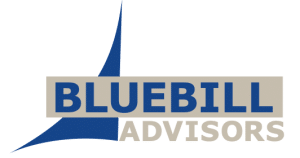Since we have our conference on Content Technologies for Government in Washington this week I probably will not get to Tech-Ed which is at our new convention center here in Boston, even though it is less than 2 blocks away. But if I had the time, I would be there scouting out the new WinFS beta and the intriguing Project Orange, (which may be relevant to the previous post on Viper). Mary Jo Foley has a list of the top 10 things to watch for there. She and others have pointed to this post for some clues on Project Orange.
Category: Collaboration and workplace (Page 63 of 98)
This category is focused on enterprise / workplace collaboration tools and strategies, including office suites, intranets, knowledge management, and enterprise adoption of social networking tools and approaches.
Ross Mayfield reports that Socialtext has hooked-up with Dan Bricklin “…(inventor of VisiCalc) to exclusively distribute, redistribute and co-develop wikiCalc“. The wikiCalc beta has been released as an Open Source GPL distribution, and Socialtext will be releasing wikiCalc “under a more liberal and commercial friendly distribution”.
This is potentially very interesting as many existing enterprise wiki users are collaborating on projects where an integrated spreadsheet could add significantly to the utility of the application. We’ll be watching to see how enterprises pick-up and use this combo.
The Wall Street Journal reported today that talks between Adobe and Microsoft over the inclusion of PDF creation in the upcoming release of Office have broken down, and they speculate that Adobe will file an antitrust suit as a result. The issue is that MS was planning to include PDF creation for free, which is obviously a direct hit at Adobe’s Acrobat revenue. If you have been following Microsoft’s XPS (XML Paper Specification) development as we reported here, you won’t be too surprised.
It is too early to know exactly how this will play out, but anyone with applications or workflows that depend on heavy use of both Office and PDF needs to keep this on their radar!
UPDATE: Mary Jo Foley has more info on this.
One of the publications I find very useful and always relevant is Knowledge@Wharton, produced by the Wharton School at the University of Pennsylvania. Check out this timely article, Microsoft’s Multiple Challenges: Is its Size a Benefit or a Burden?
Excerpt: “Microsoft announces that it will spend about $2 billion to fend off rivals such as Google and thwart Sony’s video game ambitions, and the company loses more than $30 billion in market capitalization in a day. Fair trade or overreaction?” My favorite quote? Wharton finance professor Andrew Metrick’s comment that “$2 billion to Microsoft is like a pimple on an elephant.”
Certainly true, but the investment demonstrates the range of rivals Microsoft faces in retaining its “titan” status for the long-term.
As this news item reminded us today, vendors are gearing up for the launch of Vista and Office 12. We are already seeing vendors announcing support for both in various ways, but this will continue to build to a deluge of announcements over the next 6 months. XPS (XML Paper Specification) is one of the new pieces of Vista and Office 12 that bears paying attention to. While it is not likely to displace Adobe’s PDF (certainly not in the near term at least), it will certainly be used instead of PDF for certain applications. What those applications will be is something worth thinking about. There is more info on XPS from Microsoft here, including links to the specification, developer blogs etc.
Looks like Microsoft is adding blog posting support to Word 2007 in a way that not only does not screw up your HTML, but attempts to take advantage of Word features bloggers care about without other features getting in the way. This is more appealing than it may sound at first, and may be useful when building enterprise blog applications where Office is entrenched and familiar. It will be in Office 2007 Beta 2. Learn more from the developers.
Our colleagues over at CMS Watch have published a new report on enterprise portals. As our earlier reports here and here on the portal market suggested, the list of vendors covered in the report shows the market is now dominated by infrastructure players. Janus Boye, the author of the report is giving a tutorial on Enterprise Portal Software: Architecture and Products – Intensive Review & Roadmap for Product Selection at our upcoming conference in San Francisco, and also speaking on Challenges in Integrating Portals & Content Management Systems. The report, tutorial, and conference session would be a great way to get fully up-to-speed on corporate portals and content management.
Onfolio, a company and tool I have used and liked, is being acquired by Microsoft. Onfolio is led by J. J. Allaire, one of the incredibly bright and hands-on entrepeneurial Allaire brothers who developed Cold Fusion. According to the Boston Globe, the entire six-person Onfolio team is moving from Massachusetts to Redmond. This is much like the case of Ray Ozzie’s Groove, where Microsoft is acquiring Allaire as much as they are acquiring Onfolio.
Also according to the Boston Globe, the Onfolio tool, which came in three retail versions ranging in price from $30 to $149, will be available for free, starting today, as part of the Windows Live Toolbar. However, I checked the Windows Live Ideas site quickly and couldn’t find it.
UPDATE: The Toolbar Beta is there now.

